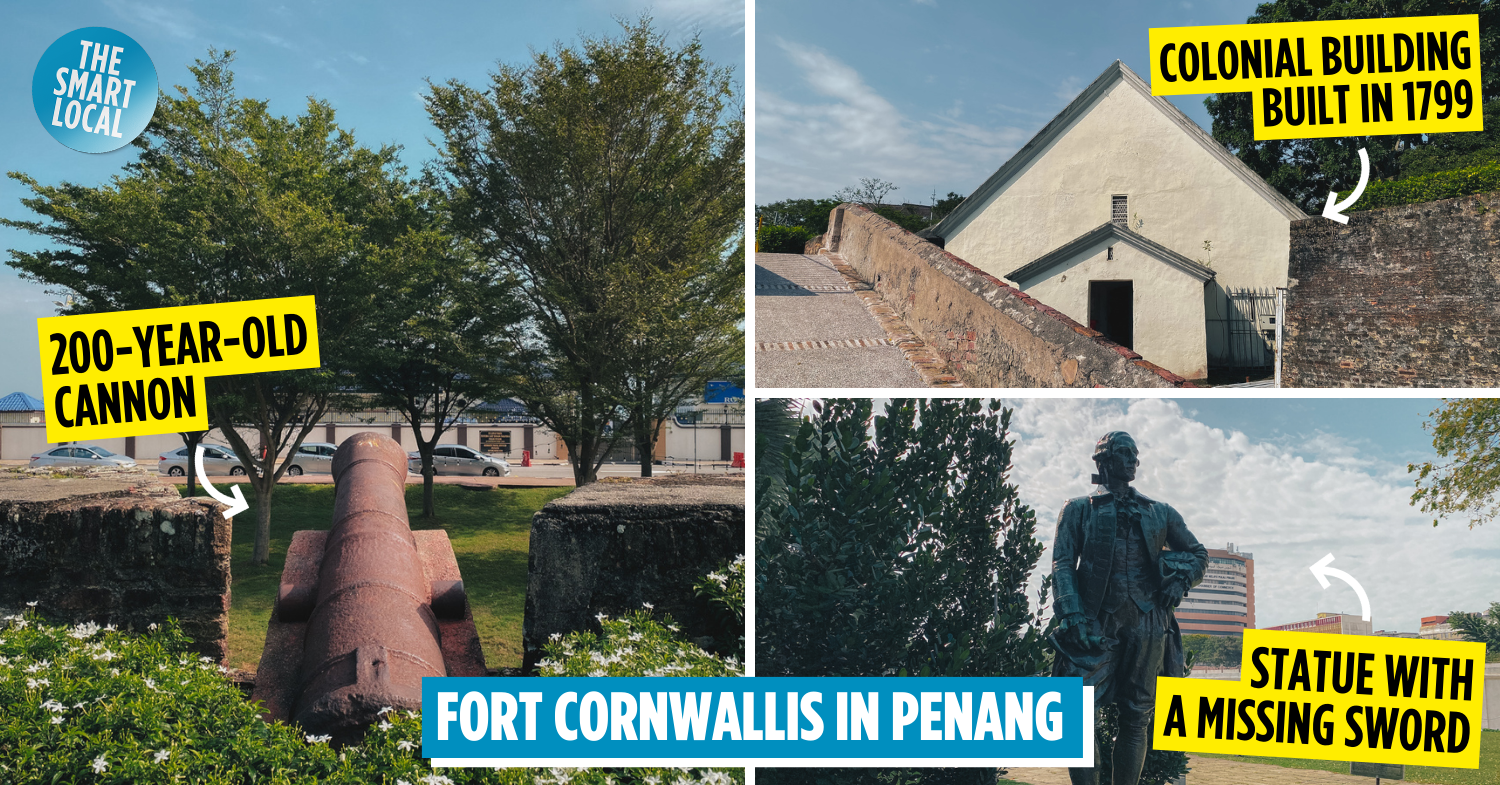Fort Cornwallis in Penang
A stroll through George Town can feel like a walk in a museum. Colourful markets, grandiose colonial mansions, and bustling hawker stalls – almost every inch of the city is filled with soul and history. Not to mention, the ancient monuments of historical significance to Malaysia.
One spot that you may have come across in your Sejarah textbook before is Penang’s Fort Cornwallis. The historical fortress was built as a defensive structure and a military base during the British occupation of Malaysia.
Today, you can visit the site and join free guided tours.
Table of Contents
- Fort Cornwallis in Penang
- What is the history of Fort Cornwallis?
- The architecture of the fort over the years
- What you can see at Fort Cornwallis today
- 1. The largest bronze cannon in Malaysia
- 2. The second oldest lighthouse in Malaysia
- 3. A gunpowder storeroom
- 4. Malaysia’s oldest peak-roofed, colonial-era chapel
- 5. The barracks
- 6. A statue of Francis Light
- A restaurant on the fort’s grounds
- Are there admission fees for Fort Cornwallis?
What is the history of Fort Cornwallis?
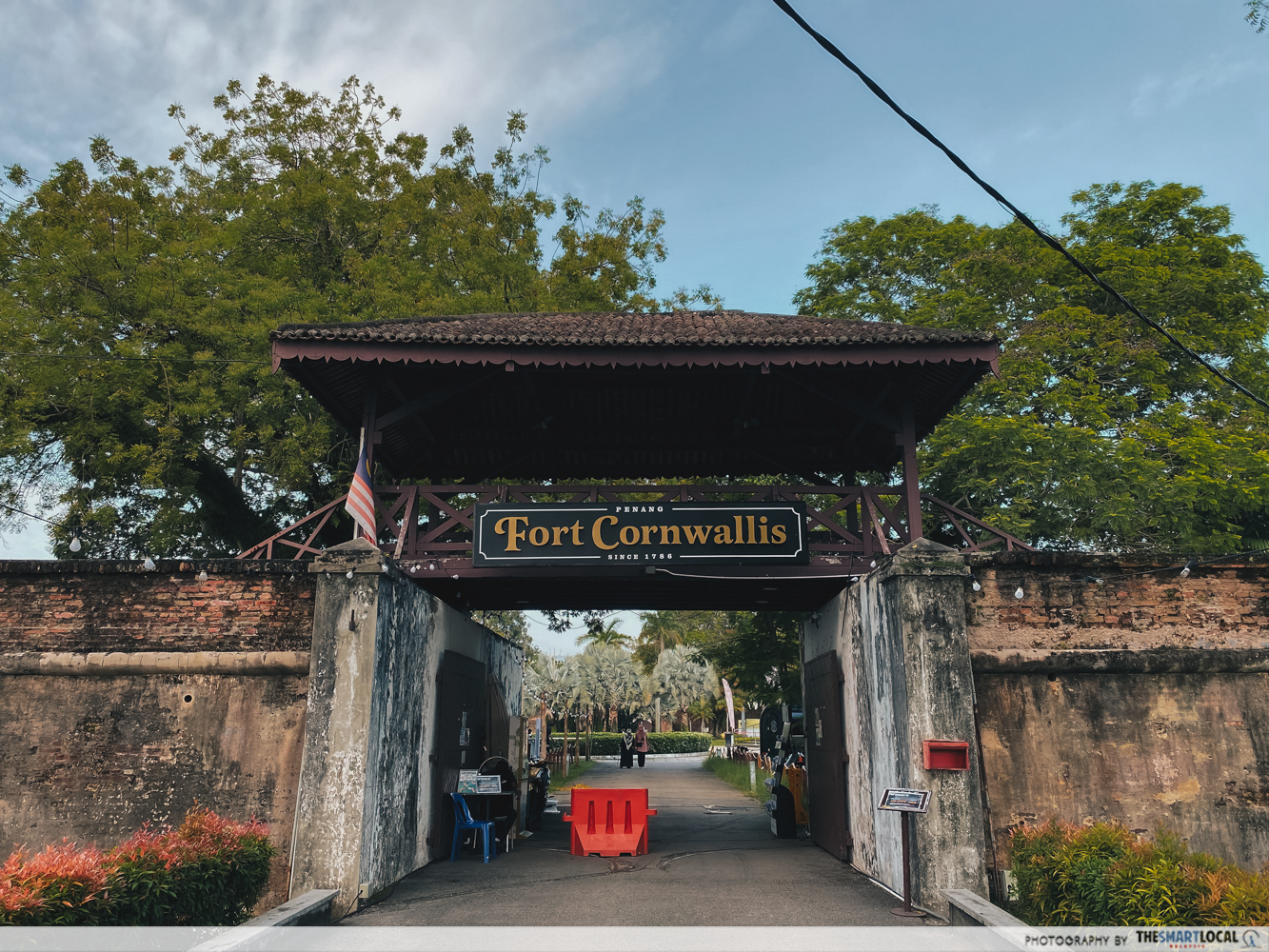
Fort Cornwallis is a spot that contributed to George Town’s status as a UNESCO World Heritage site. The monumental gem has a long and rich history that dates back to 1786 when the British first settled on the island.
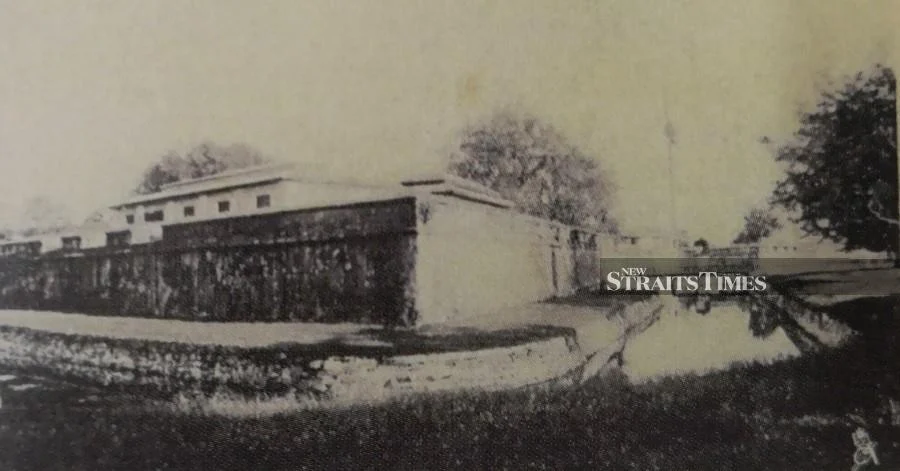
Image credit: New Straits Times
The history of Fort Cornwallis is linked to Captain Francis Light from the British East India Company. He claimed possession of a plot of land by the sea upon stepping ashore in Penang, later building the original fort on the exact spot where the structure we see stands today. The fort was named after Lieutenant-General The 2nd Earl Cornwallis, who was the Governor General of Bengal at the time of its construction.
The architecture of the fort over the years
Fort Cornwallis was first erected as a simple star-shaped stockade built with nibong palm trunks. However, it was unable to withstand Malaysia’s harsh tropical climate, let alone defend the region against possible attacks of the French warships.
Despite numerous attempts to repair and reinforce the fort, including doubling and trebling the stockade size, mounting cannons seaward, and refortifying the structure, it was still nothing more than a dilapidating stockade.
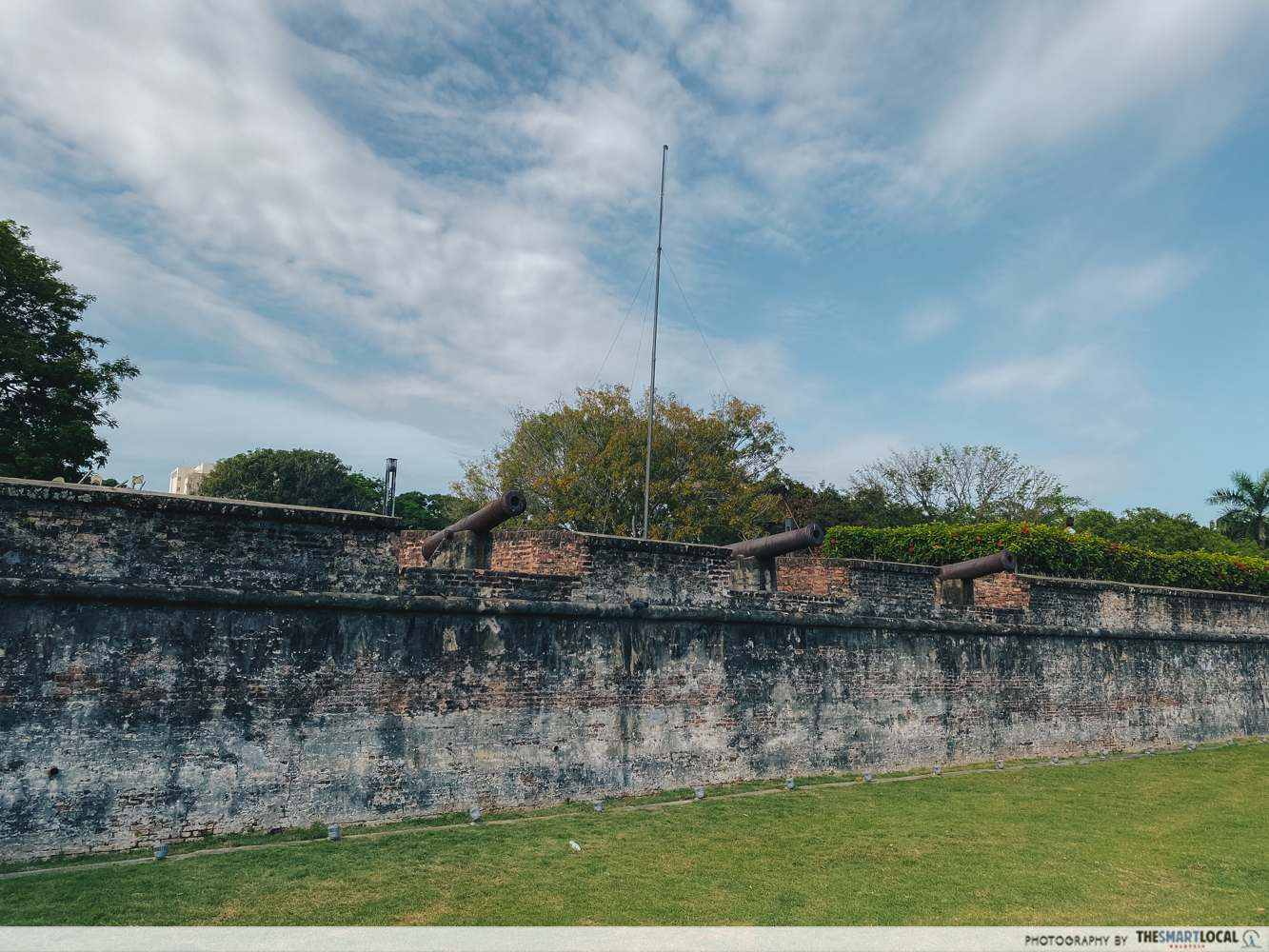
Fearing the outbreak of the Napoleonic Wars, Captain Light took matters into his own hands and revamped Fort Cornwallis entirely into a sturdier stone structure, at a cost of about 67,000 Spanish dollars. It took a decade for Fort Cornwallis to be transformed into the monument it is now. Howeever, not a single battle ever broke out at the fort, nor did it ever have to fire a gun in its own defense.
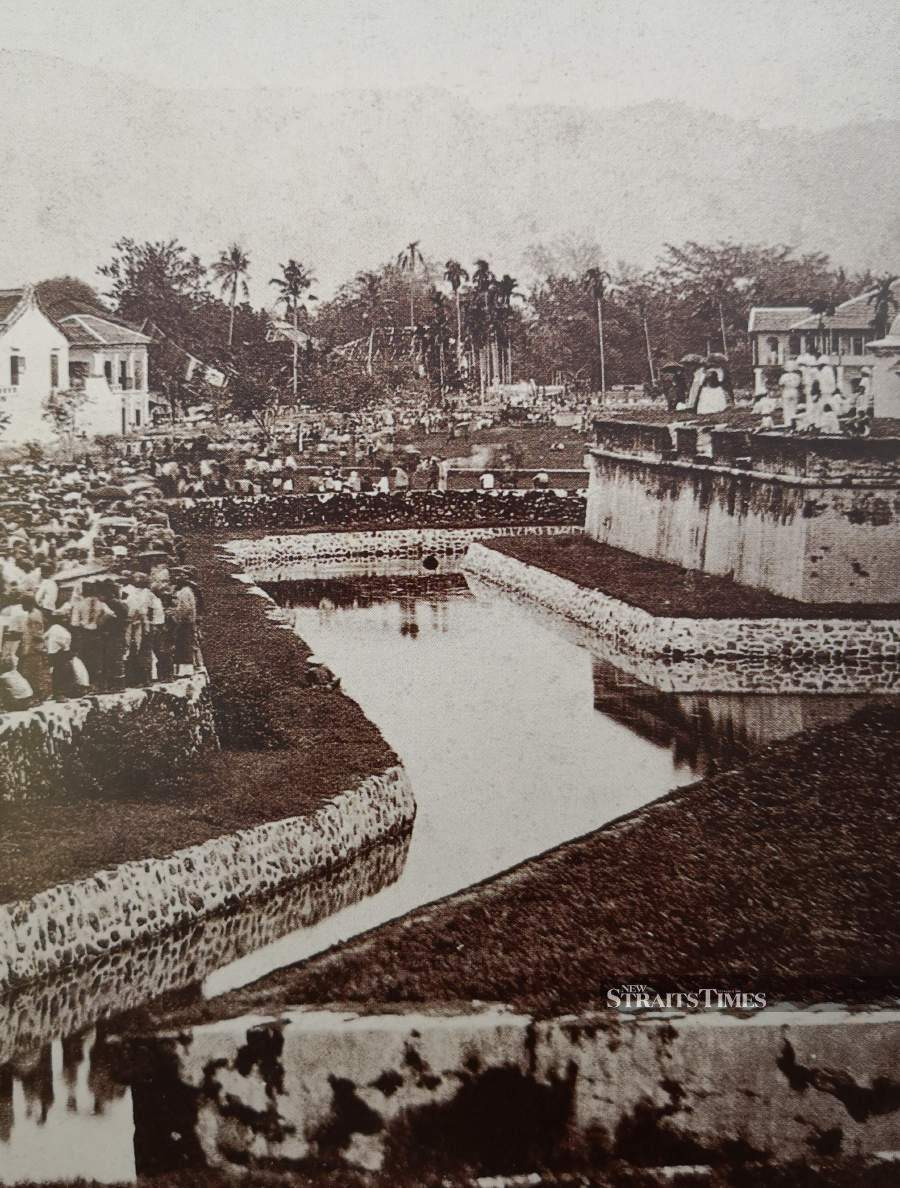
Image credit: New Straits Times
Though the fort was originally intended to be a military base, it functioned more as an administrative site. It once housed the Supreme Court of Penang in 1808, and was reputedly a base for the Sikh and European police force after that.
In the fort’s early days, a moat crossed by drawbridges surrounded the structure. This was filled with soil in the 1920s due to a malaria outbreak in the area.
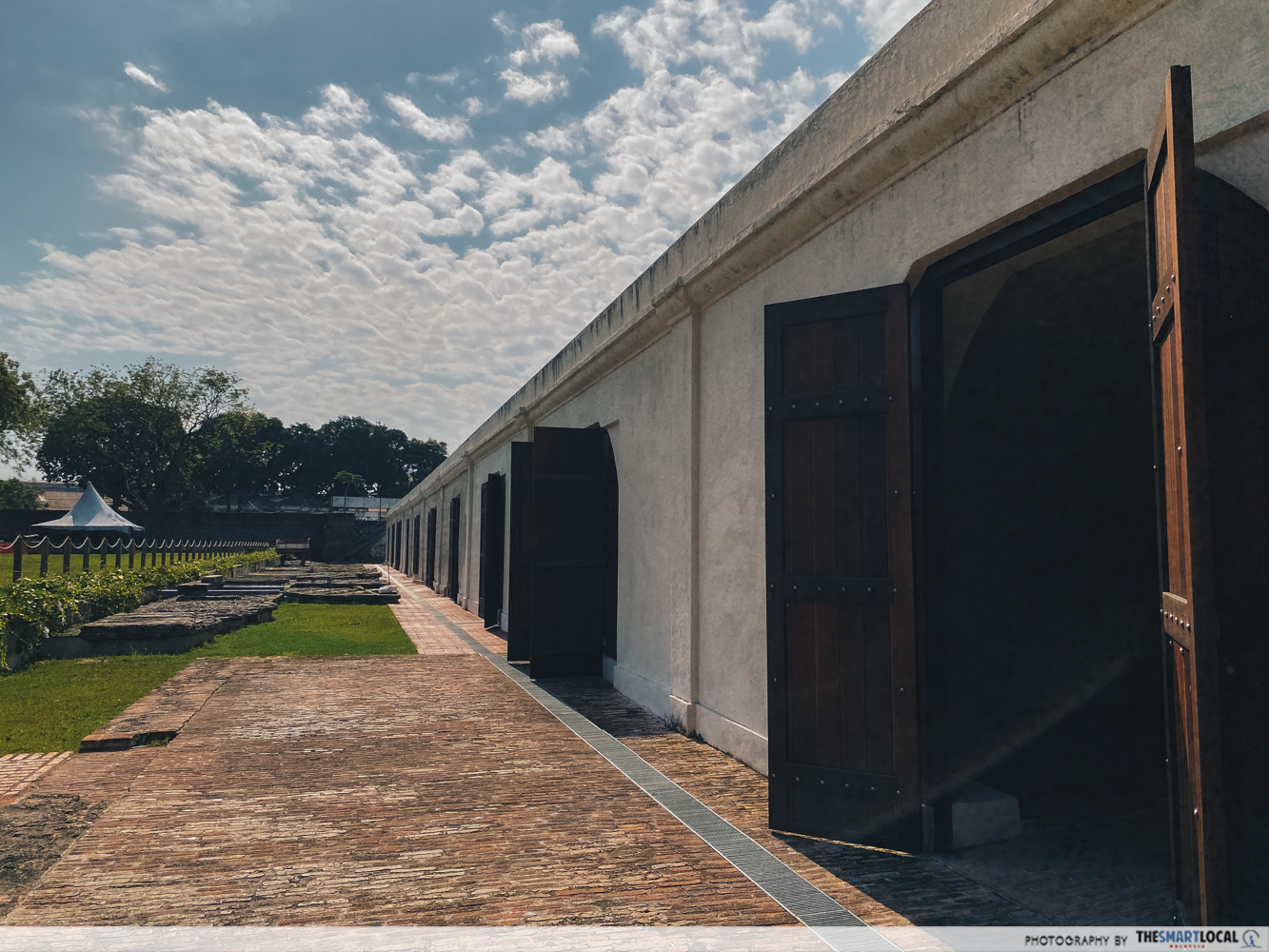
What you can see at Fort Cornwallis today
Early archaeological surveys, old photographs and historical records of Fort Cornwallis show various buildings and structures within the site. Many of these are still standing today. One of the main highlights of the monumental site is the old mounted cannons that decorate the outer ramparts of the fort.
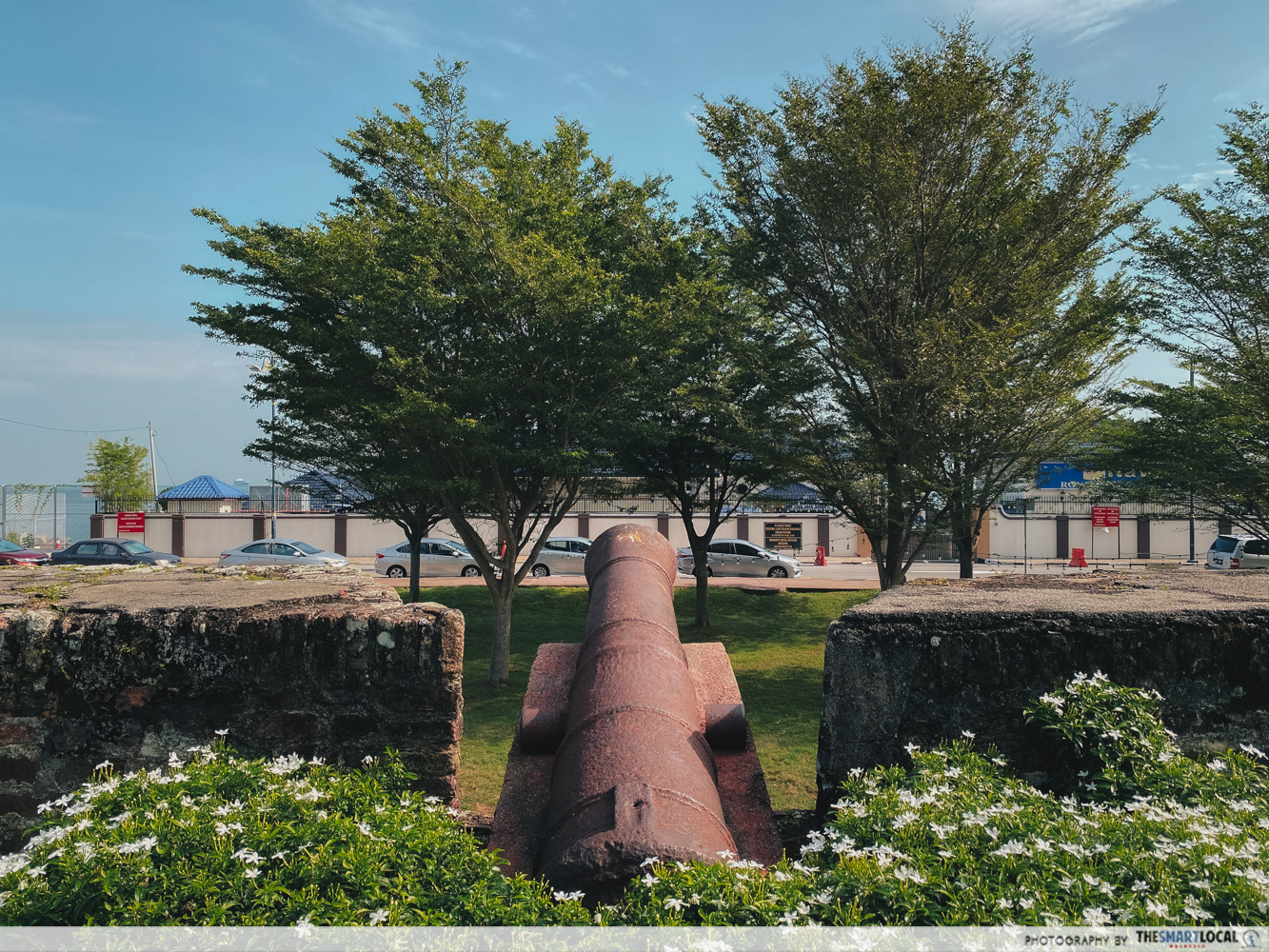
Towards the end of 1809, stone battery cannons that extended out over the Northwest bastion of the fort were constructed on site. The addition of these pounder cannons, along with the wide moat, gave artillery cover to the harbour and made George Town one of the best defended ports in the Far East.
1. The largest bronze cannon in Malaysia
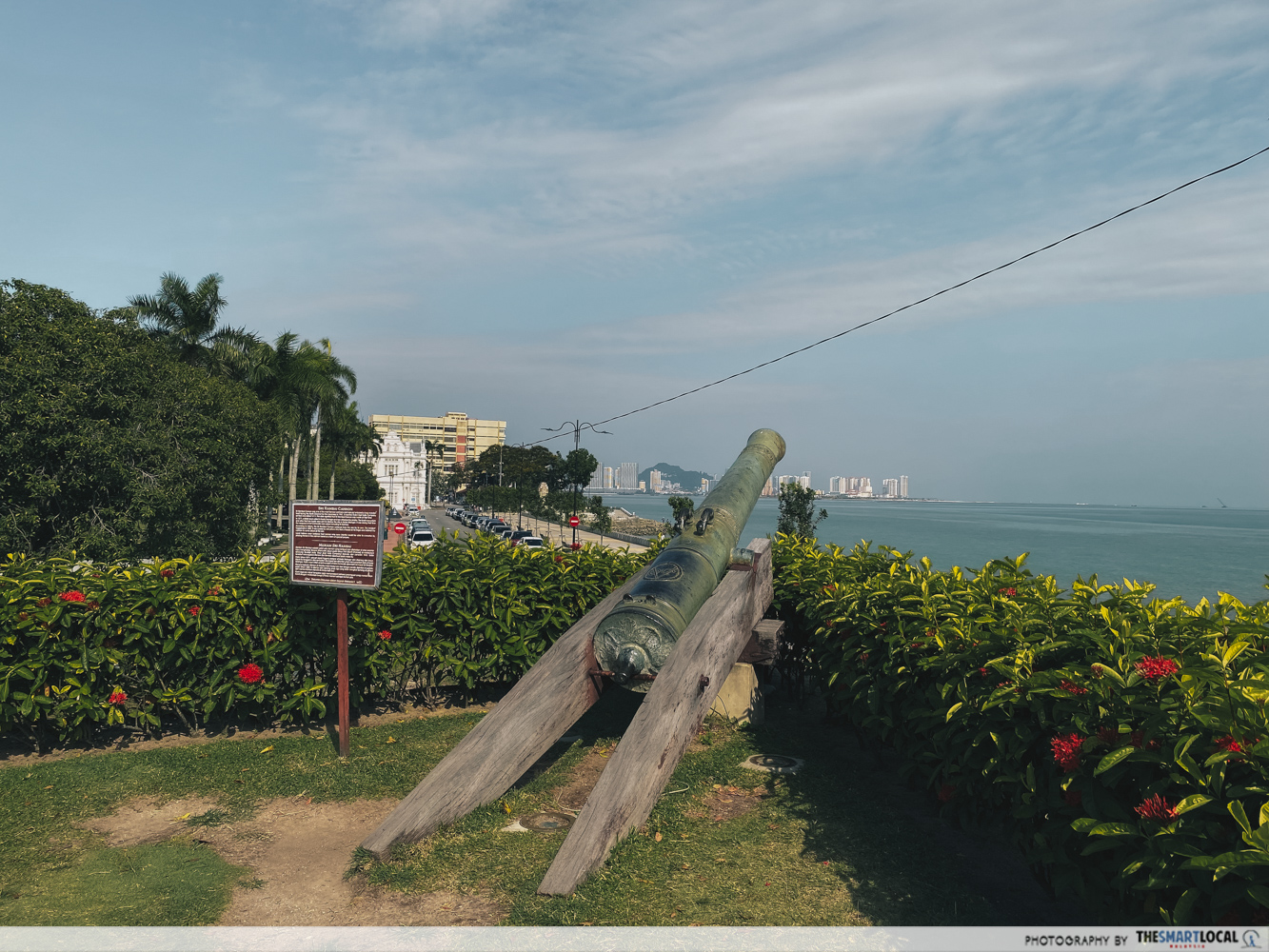
The largest and the most well-known cannon is the Seri Rambai, a 17th-century Dutch artillery weapon that was originally presented to the Sultan of Johor. According to folktales, this is the largest bronze cannon in Malaysia and was believed to possess a magical power. It is said that women who placed flowers on the barrel of the cannon would see improved fertility.
2. The second oldest lighthouse in Malaysia
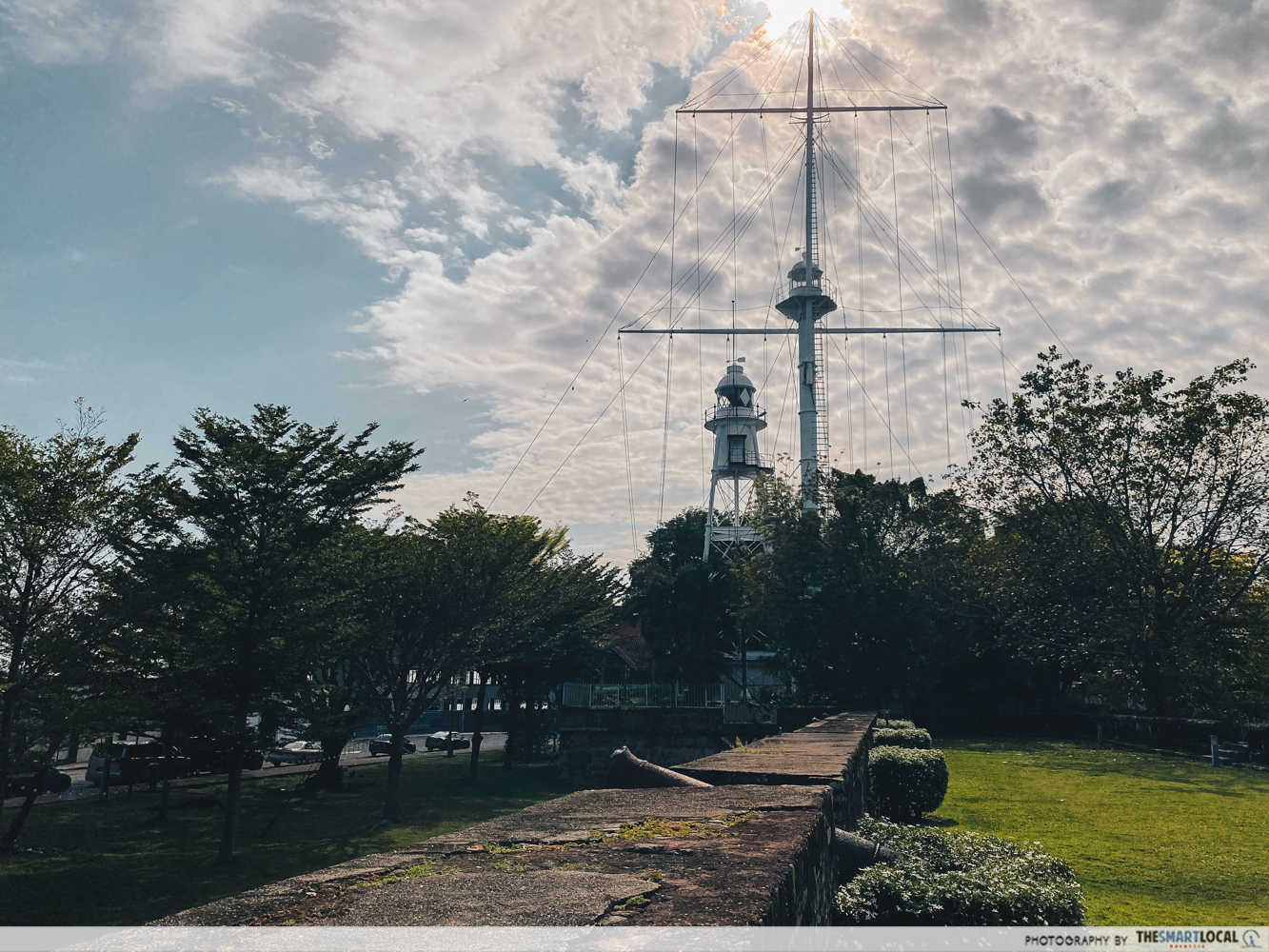
A skeletal lighthouse that stretches 70ft in height, named Penang Harbour Lighthouse, stands erect on the Northeastern point of the fortification. Built in 1882, it is the second oldest lighthouse in Malaysia and is pretty unique in how it resembles a ship mast.
Fun fact: this lighthouse is the only one in Peninsular Malaysia that does not serve any navigational purpose.
3. A gunpowder storeroom
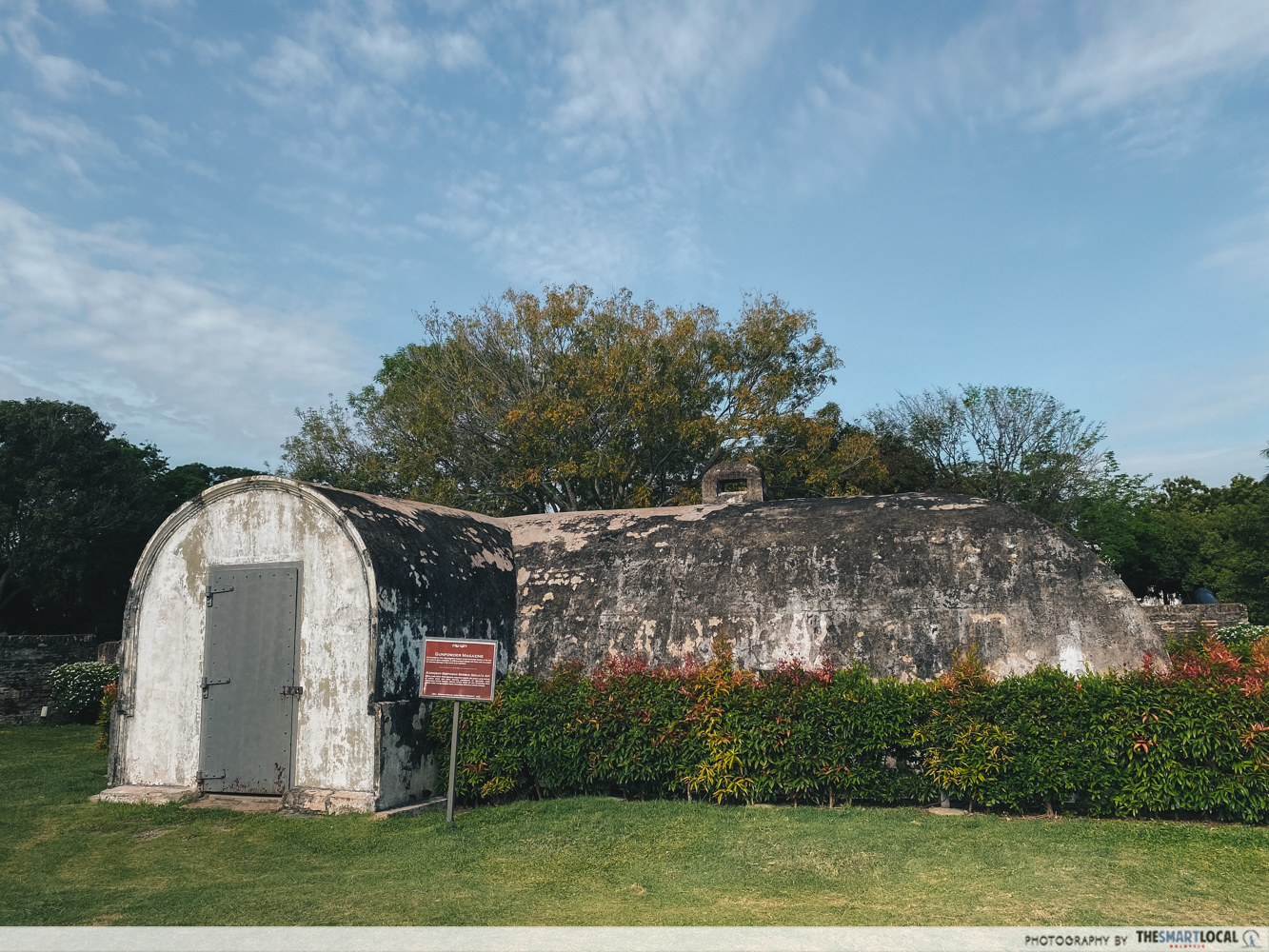
Right next to the lighthouse is a tall timber flagstaff with a revolving light halfway up. This was once used to communicate with another flagstaff on the top of Penang Hill.
Constructed in 1814, the gunpowder storeroom on the grounds was used to house approximately 600 barrels of gunpowder and other explosive materials. This main room was supplemented by small magazines on the ramparts. Its pillbox shape and thick walls were designed to minimise damage in the event of an explosion.
4. Malaysia’s oldest peak-roofed, colonial-era chapel
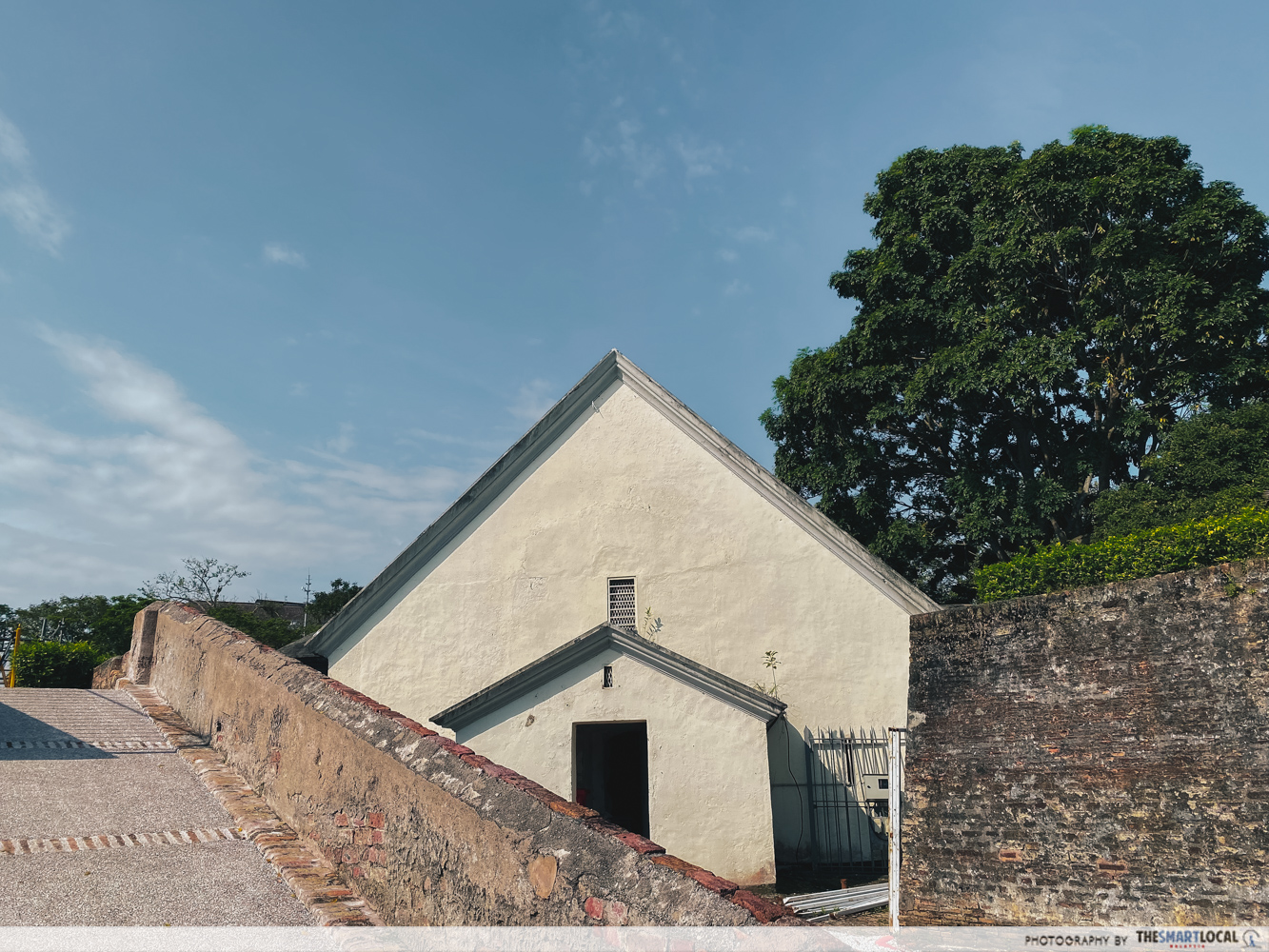
Situated in a corner of the bastion, the old chapel of Fort Cornwallis is a colonial gem built in 1799 for Christian worship and religious purposes. It was also the chapel where the widow of Francis Light, Martina Rozells, is said to have married her second husband, John Timmers.
Today, this chapel has the honour of being the first and the oldest peak-roofed, colonial-era structure that remains standing in Malaysia.
5. The barracks
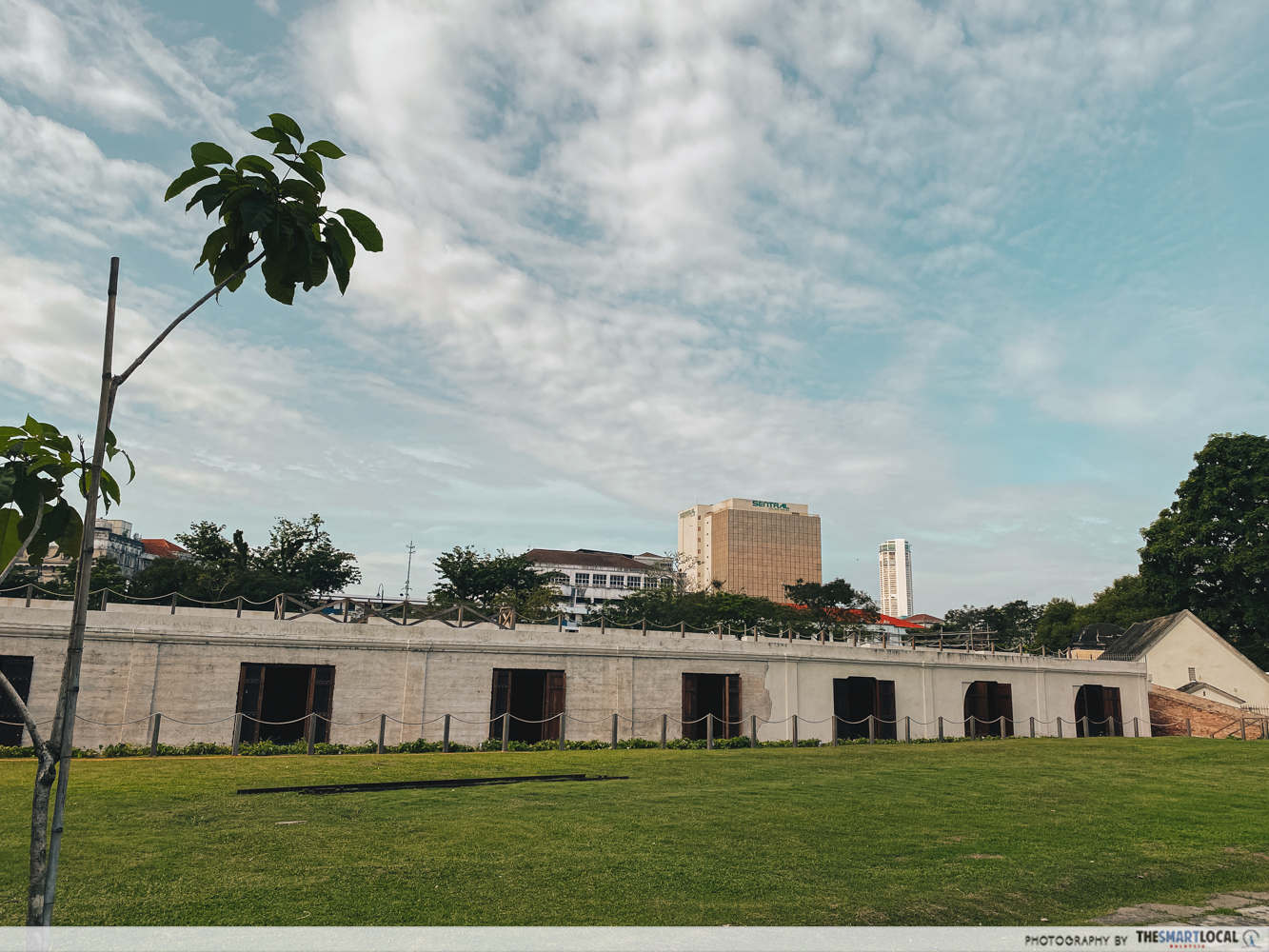
Along one side of the grassy field, and right next to the chapel, are barracks that were used to store armaments, more gunpowder, and gun carriages.
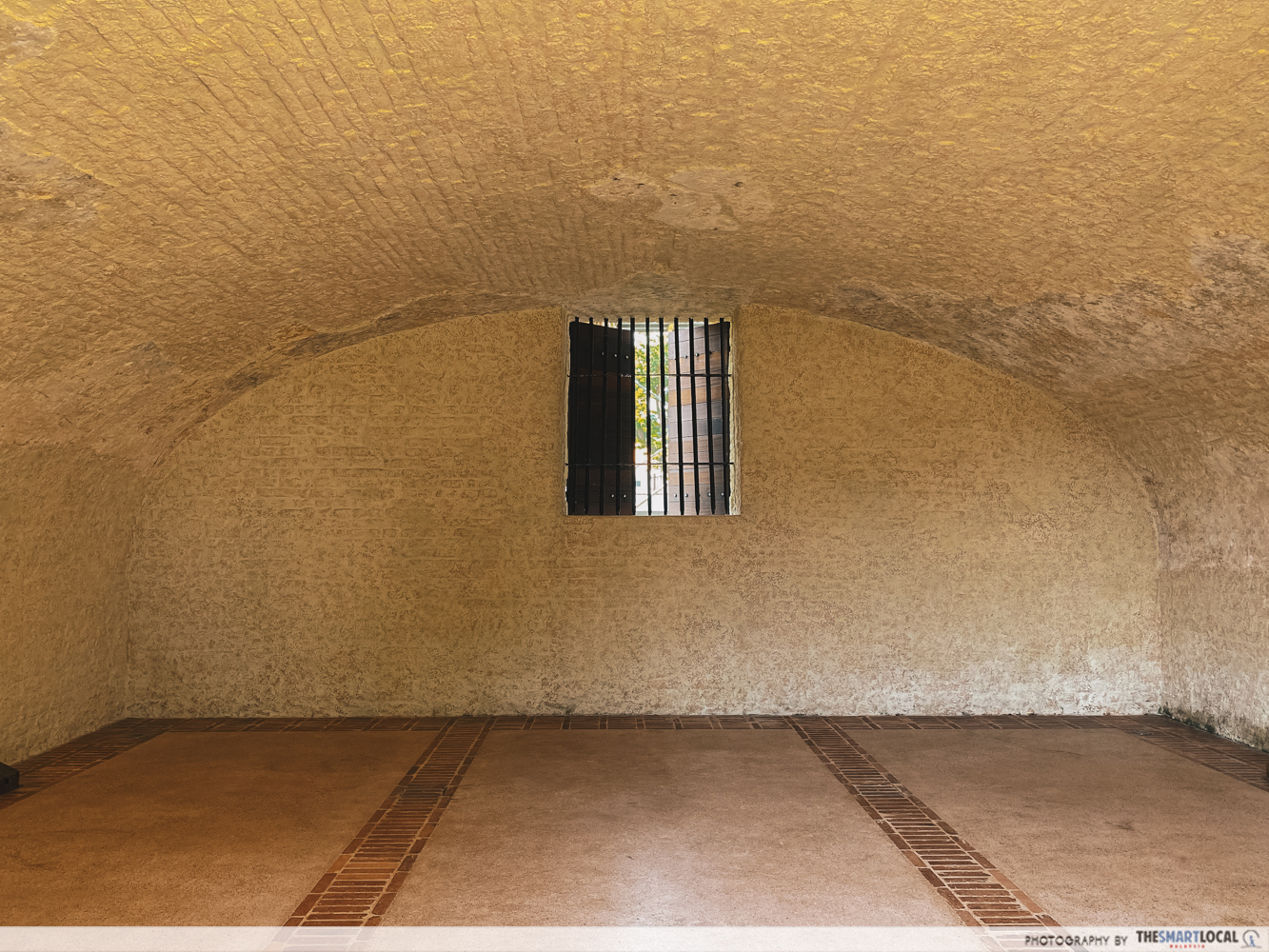
Several of them once operated as offices that housed artillery regiments and officers, while others were used as kitchens, toilets and guardhouses. Some were even used as cells to hold military prisoners. It was close to the 20th century when a large drill hall and modern amphitheatre occupied part of the centre of the fort to promote cultural activities.
6. A statue of Francis Light
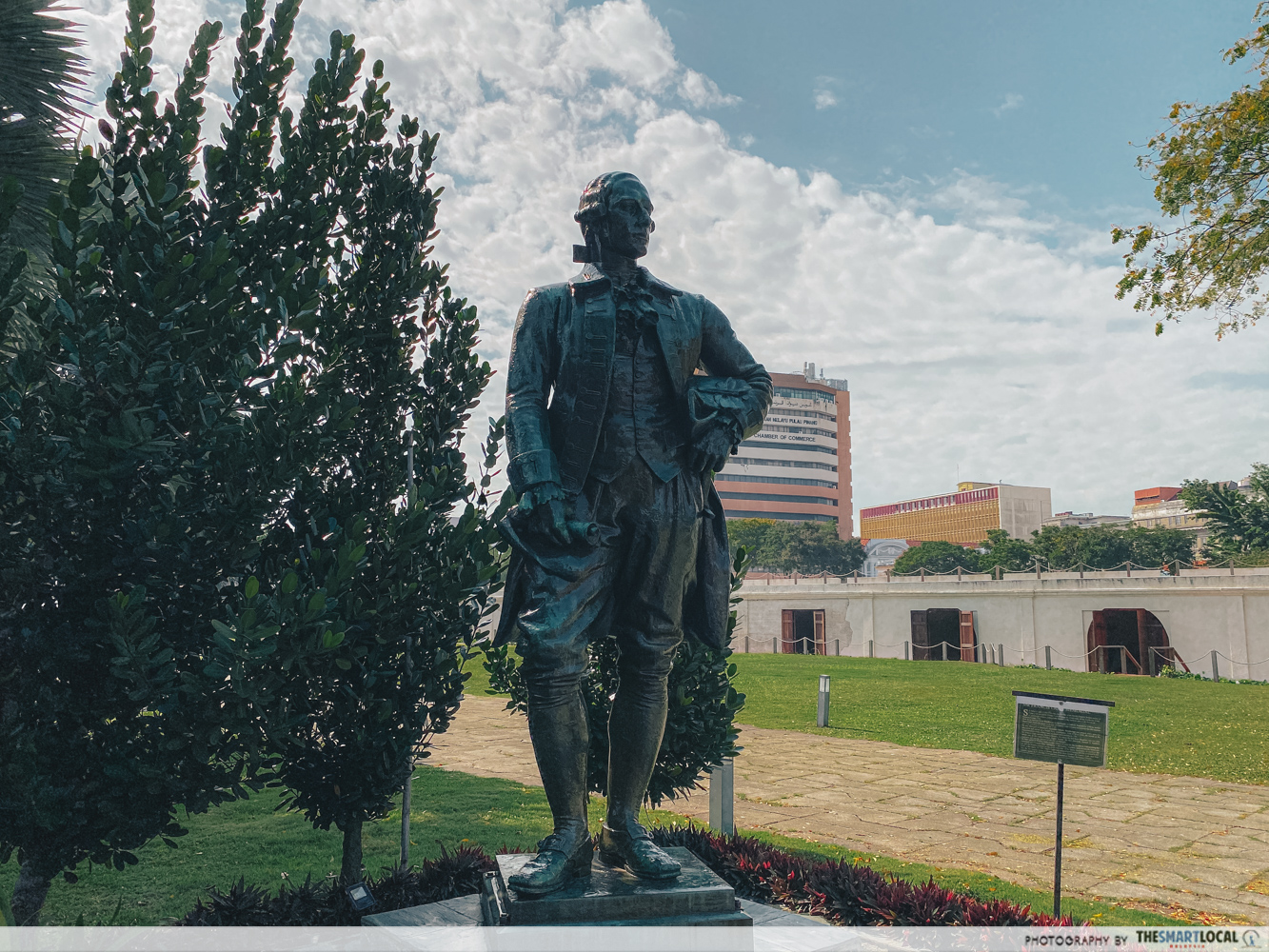
The famous bronze statue of Francis Light – sculpted by F.J. Wilcoxson and modelled after Lights’ son – was commissioned from Britain and erected on a high plinth within the grounds of the fort. It was unveiled in 1936 to commemorate the 150th anniversary of George Town’s founding.
Fun fact: the original statue is said to have a sword, but it disappeared during the Japanese occupation of Penang in World War II.
A restaurant on the fort’s grounds
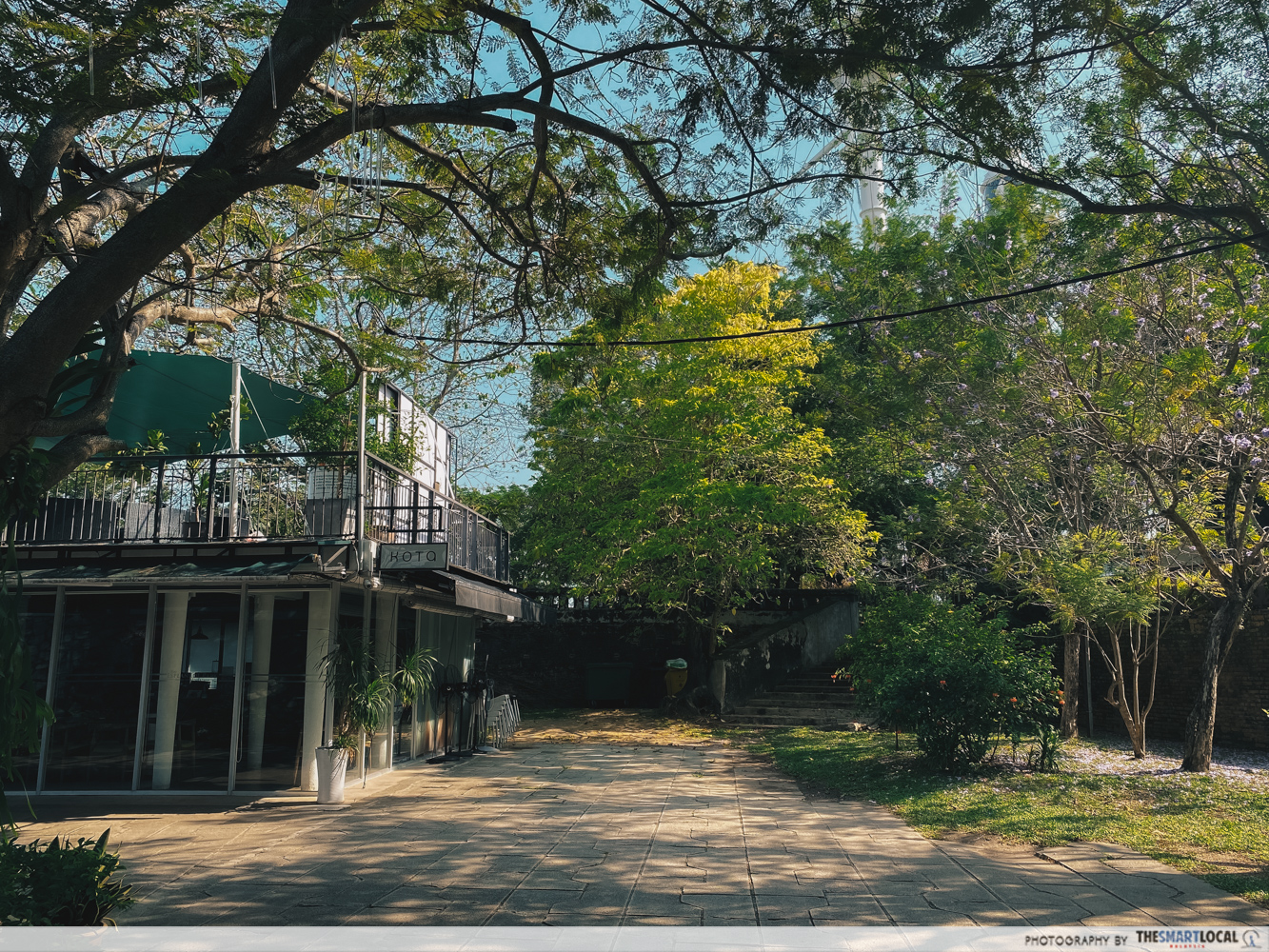
When you’re done touring the grounds of Fort Cornwallis under the blazing sun, you can stop by the nicely air-conditioned Kota Dine & Coffee restaurant onsite, which will fill you up with good local dishes amidst a historic setting.
Are there admission fees for Fort Cornwallis?
Today, you can visit the site for RM10/pax if you’re a MyKad holder or RM20/pax for visiting tourists.
Guided tours are available as well, on Fridays and the weekends with time slots of 10am, 12pm, 2pm, and 4pm.
Visit the historic Fort Cornwallis in Penang
Like something out of a mediaeval world, Fort Cornwallis is an awe-inspiring architectural treasure steeped in history. A momentous relic that is of strategic importance for both Penang and Malaysia, the fort offers history buffs and tourists alike a vivid snapshot of Penang’s history.
Hence, it is important to preserve this historic gem that has stood the test of time and remains a remarkable memento of our nation’s past.
Address: Jalan Tun Syed Sheh Barakbah, 10200 George Town, Penang
Opening hours: 9am-10pm, Daily
Contact: 04-263 9855 | Cornwallis Facebook
Read more interesting features of places here:
- 10 unique Chinese temples in Malaysia
- Emperor Villa, hiking trail that leads to a Chinese villa in Penang
- Pinang Peranakan Mansion, a house museum with antiques in Penang
Cover image adapted from: TheSmartLocal Malaysia
Photography by Jia-Ju.
This article was first published on 25th February 2023, and was last updated on 30th April 2025.
